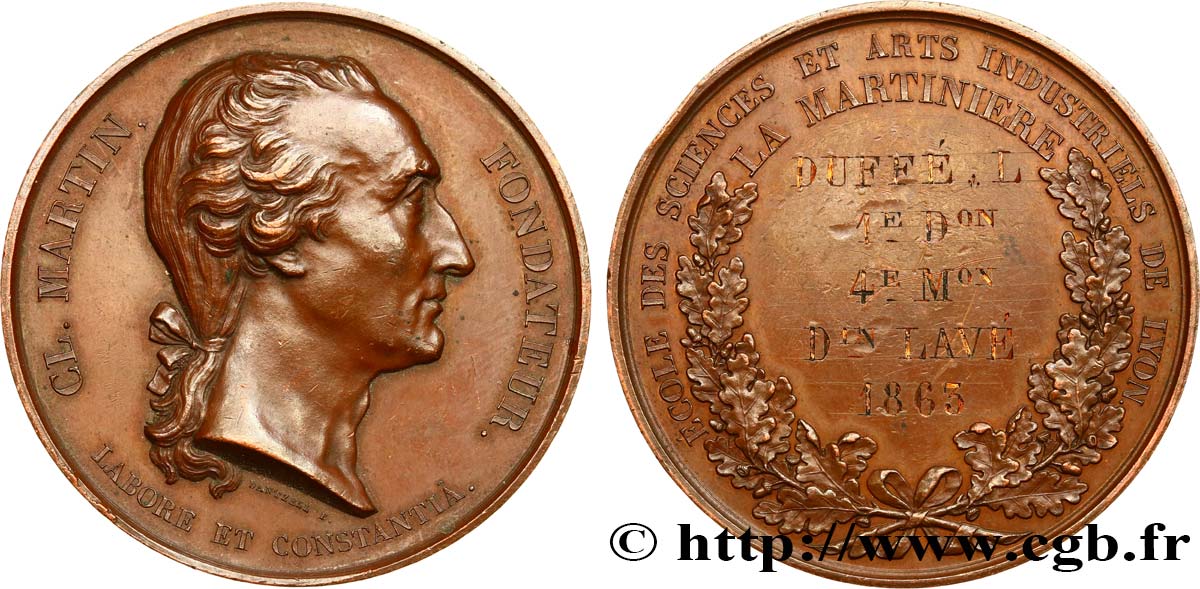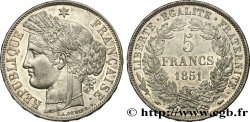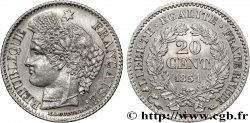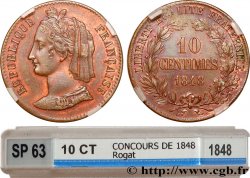fme_477582 - II REPUBLIC Médaille, Major Martin, École de la Martinière
100.00 €(Approx. 114.00$ | 86.00£)
Quantity
Add to your cart

Type : Médaille, Major Martin, École de la Martinière
Date: 1863
Mint name / Town : 69 - Lyon
Metal : copper
Diameter : 50,5 mm
Orientation dies : 12 h.
Engraver DANTZELL Joseph (1805-1877)
Weight : 59,95 g.
Edge : lisse + abeille CUIVRE
Puncheon : Abeille CUIVRE
Coments on the condition:
Présence de coups et de rayures. Légère usure sur les points hauts
Obverse
Obverse legend : CL. MARTIN - FONDATEUR / LABORE ET CONSTANTIA.
Obverse description : Tête à droite du Major Martin; signé : DANTZELL F..
Reverse
Reverse legend : ÉCOLE DES SCIENCES ET ARTS INDUSTRIELS DE LYON / LA MARTINIERE.
Reverse description : Légende en 2 lignes avec couronne de chêne, inscription gravée : DUFFE L / 1E DON / 4E MON / DIN LAVE / 1863.
Commentary
Claude Martin, né à Lyon (France) le 4 janvier 1735 et mort à Lucknow (Inde) le 13 septembre 1800 est un soldat français de la Compagnie française des Indes orientales, puis de la Compagnie anglaise des Indes orientales (CAIO). Il amasse une grande fortune qu'il consacra à la création, après sa mort, de trois écoles à Calcutta, Lucknow et Lyon, toutes trois appelées “a Martinière”.
La Martinière fut un bref instant dans le palais Saint-Pierre (musée de peinture de Lyon) puis en 1832-1833 transférée dans l'ancien cloître des Augustins vers les Terreaux. Aujourd'hui il existe aussi La Martinière-Duchère, La Martinière-Monplaisir.
Le Major Martin légua aussi des sommes pour construire la Martinière-Lucknow (Inde) et un autre établissement à Calcutta. Mais les deux institutions "historiques" furent celles de Lyon (Augustins) et Lucknow avec la même devise : Labore et Constantia. .
La Martinière fut un bref instant dans le palais Saint-Pierre (musée de peinture de Lyon) puis en 1832-1833 transférée dans l'ancien cloître des Augustins vers les Terreaux. Aujourd'hui il existe aussi La Martinière-Duchère, La Martinière-Monplaisir.
Le Major Martin légua aussi des sommes pour construire la Martinière-Lucknow (Inde) et un autre établissement à Calcutta. Mais les deux institutions "historiques" furent celles de Lyon (Augustins) et Lucknow avec la même devise : Labore et Constantia. .








 Report a mistake
Report a mistake Print the page
Print the page Share my selection
Share my selection Ask a question
Ask a question Consign / sell
Consign / sell
 Full data
Full data









